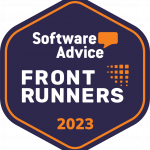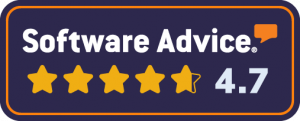Hands-On Learning
There are no shortage of studies proving that hands-on learning has a significant impact on retaining information. It is shown to better engage both sides of the brain – organized thinking and creative thinking – in order to effectively help students grasp the topic at hand. Too often, learning means storing tidbits of information in your head until you need it (and hopefully you will be able to recall it). However, with active, hands-on learning the information can be retained by forming stronger overall connections with more relevant information.
Onboarding, the process of integrating someone into an organization, has also proven to widely benefit from hands-on learning. Many software programs have found it crucial to provide their clients with various outlets for learning and retaining information. The goal is to set their clients up for success by providing active learning, building an ongoing, supportive relationship, and being the stepping stone clients need to streamline their business.
Insight
Three industry-leading partners have shared their experience with both in-person and self-led onboarding to demonstrate the pros and cons of each. Just like any solution, there is not necessarily a one-size-fits-all answer, but in-person onboarding has many clear benefits for both the company providing it and the client.
Customer Intro
Metropolitan Weddings unites gifted artists and skilled professionals with engaged couples in the Springfield, MO region through a semi-annual wedding magazine, professionally-planned wedding shows, and an online referral service.
Upslope Media is dedicated to delivering the highest quality results that revolve around user experience, relevancy, innovation, and technology. Connecting Wyoming brands and organizations with unique and local audiences.
The Penguin Group helps businesses structure their processes, systems, and employees by determining the ideal tech stack and implementing it. Services range from organization charts, job descriptions, and employee handbooks to process flowcharts, software implementation, and automation.
Experience Share
Dawn Williams, Metropolitan Weddings
“Being able to attend in person, ask questions, and dive deep into it with [the experts] made it a lot easier.”
Publisher and Editor in Chief of Metropolitan Weddings, Dawn Williams, has experienced both in-person and self-led onboarding. “I’ve participated in onboarding where they just give you some videos and tell you to watch them,” says Williams. “And that is just not a very successful way [to learn], especially when learning a [software] program that has many different functions. You never fully use the program. It’s just almost impossible because you do not have time to sit and watch videos, and while you are watching videos you cannot ask questions immediately. The biggest problem with self-led onboarding is a lack of answers.”
Williams explains by not taking the time for dedicated learning, you basically get to the point of doing the task that needs to be done in the moment and never progressing with the program because life happens and you get busy. “You don’t get that one-on-one time to sit with someone and explain the issues you are having,” says Williams. “It’s very frustrating to be having a problem and be guided to the Frequently Asked Questions or have a pre-made, generic video sent to you. That’s what happens with a lot of companies — you don’t get one-one-one service, you’re treated as a number.”
On the other hand, Williams’ experience with in-person onboarding was completely different from the latter. Dedicating time for learning by attending an in-person training allowed her to learn the base from which she could build on. “We spent two full days learning and it gave me bite-size pieces I could handle,” said Williams. “I felt like we could learn the base of the program so that when we got back home and were trying to implement everything, we had a good understanding of how the program worked. they helped us to get things loaded in that would have been pretty hard to do at home by ourselves. As we had questions, they came right over to us, sat with us, and helped us get everything imported. Having that extra help was huge.”
After the in-person onboarding, when having specific challenges, she contacted staff and shortly after was provided with a personalized video addressing her by name. She could actually watch them in her account fixing the problem and learning the solution in the process.
As a bonus benefit, Williams said the in-person meeting allowed her to meet people from other organizations who were onboarding as well. “Given the opportunity to meet another team of people who do publishing was pretty cool,” she said. “They’ve been super nice and we’ve exchanged emails in order to help each other out when needed.”
Having met in person, Williams feels she knows the staff on a more personal level and they have a better understanding of what her business is and what her needs are. “We all learn differently and I feel they had time to learn us, our company, and our learning styles,” said Williams. “They better know how to help us because they know our business. And I don’t feel like a pain [when contacting them] because I feel like I’m talking to friends now.”
Matt Farnsworth, Upslope Media
“I personally can usually pick up on things quickly. So for me, being able to go a little faster is helpful in a self-led program.”
Proving there is not necessarily a one-size-fits-all approach to onboarding, Matt Farnsworth, platform manager at Upslope Media, can see the benefit of both in-person and self-led training.
“One of the things I really like about a self-led onboarding program is I can go at my own pace,” said Farnsworth. “For our team, we have grossly different levels of technological capabilities. I work enough with software programs and different things that I personally can usually pick up on things quickly. So for me, being able to go a little faster is helpful in a self-led program. On the other hand, plenty of other people on my team don’t have that level of technological experience so it takes a bit more instruction for them. Having a more structured onboarding program works very well for them.”
Farnsworth’s experience with an in-person onboarding process was good with the aspect of being in the room with the company’s team members and being able to ask specific questions. “We watched the training videos, we learned the baseline information, and learned how everything was going to work for us, our products, our services, and our workflows. And so being able to get into the specifics was really, really helpful for us,” said Farnsworth. However, he also shared his slight preference for self-led onboarding that allows him and his team to go at different speeds to learn different things that apply to each of them individually.
With benefits to both methods, Farnsworth shared thoughts on how to marry the two in order to cater to various learning styles and technological levels on your team. “If we could spend two or three hours doing a one-on-one before we got to the [in-person] training we could go over some of those preliminary steps and start getting the basics of our account set up. For us, this makes sense because we do not need help with setting up account information and we would have more time to get into the working details when in person.”
Farnsworth does recognize most companies would highly benefit from in-person onboarding. “It’s a very helpful process, I would just prefer to do a bit more legwork before actually meeting in person,” said Farnsworth. “But not all companies would be in that position.”
Nesanel Moeller, The Penguin Group
“If we show you how to use the software, you’ll end up using it properly versus if you try to use it on your own, you’ll be so confused that you’ll end up dropping it.”
As an operations and management consultant, Nesanel Moeller has experienced firsthand the benefits of in-person onboarding and training as opposed to self led. “My experience with self-led training was definitely a much longer process because you’re really figuring things out for yourself,” said Moeller. “A lot of times, when you’re not sure about something you kind of have to play around and make assumptions about the software, which are not necessarily true. And then you either start thinking it cannot do what you’re needing it to do or you are just not using it the way it was intended.”
Moeller works with a lot of companies who are setting up project management tools, and these tools are marketed as something that can be set up on your own. “I’ll give you a very good example of that,” said Moeller. “Almost every single person I meet with – it could be a CEO, COO, CTO – Every single time, without fail, they all seem to set things up the same [standard] way. It’s fascinating. They all do it exactly the same way and they all have the same issues. When I show them the correct way to use it [specific to their company] a light bulb goes off and they are like, ‘help us do that!’ The point is, when you are looking at doing self-led onboarding, it’s very hard to gauge how someone is going to manage the software themselves – what they are going to understand, how they are going to understand it – and a lot of times they go in a completely different direction than intended.”
Moeller enjoys the aspect of building a rapport with people on the team with in-person training and feels they gain a much better understanding of who the client is and what they are trying to accomplish. “Software is not used by any two companies in the same way,” said Moeller. “When you build rapport, you can better brainstorm and figure out how to use things properly and be creative in how you are using it. You know who to ask what questions and they know better how to answer the questions because they aren’t starting from scratch with you. I have trust in that person that they are going to get back to me.”
Speaking to the difficulty of self-led onboarding, Moeller said, “I’ve dealt with an email software before that in the beginning, when they were first launching, they had a mandatory meeting to show everyone how to use it, what the features are, what makes it unique. Their whole mindset was If we show you how to use the software, you’ll end up using it properly verses if you try to use it on your own, you’ll be so confused that you’ll end up dropping it.”
In Moeller’s experience, when you sit down and strategize, it also gives that company a chance to receive feedback and further improve their product based on what their customers are needing. “I actually helped a company improve their product by pointing out an issue. We sat down together, solved the problem, and now others can benefit from that.”
Conclusion
When the goal is to set clients up for success, it’s important to consider all levels and styles of learning in the process. In-person onboarding is the perfect opportunity to not only create a solid base for learning and succeeding, but also fosters strong business relationships, a more hands-on understanding of the product, and proper guidance.
While some who are more technologically advanced could benefit from a more self-led process, it is apparent that adding a more personal touch provides a more trusting environment that creates a healthy knowledge of the product and longer-lasting relationships.
In-person Onboarding Benefits
- One-on-one instruction
- A more personalized experience
- Higher client retention
- Immediate answers/feedback
- Build a stronger relationship with clients
- Connect with people in your industry
- Learn additional functions/tasks
Self-led Onboarding Benefits
- Learn at your own pace
- Start using products sooner
- No travel time/expenses





